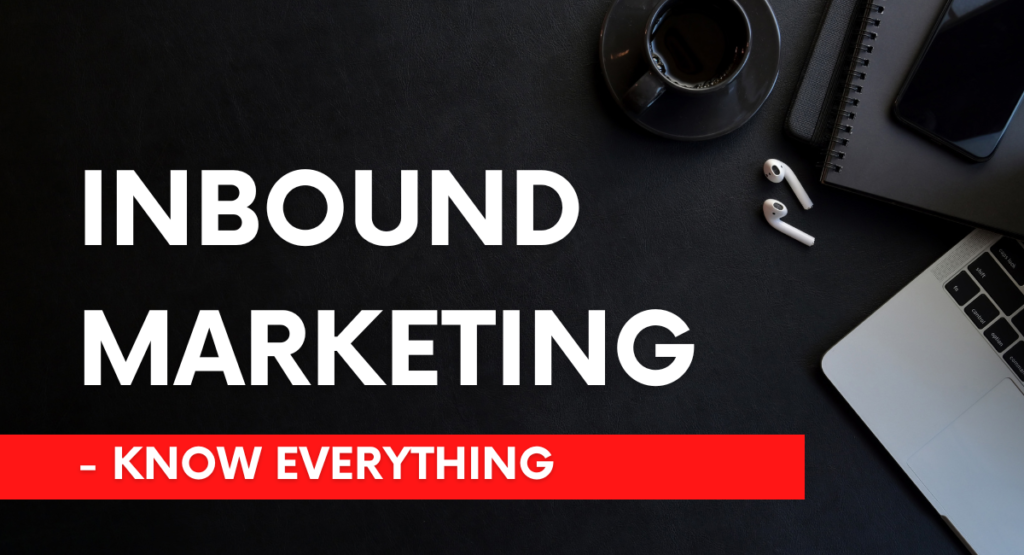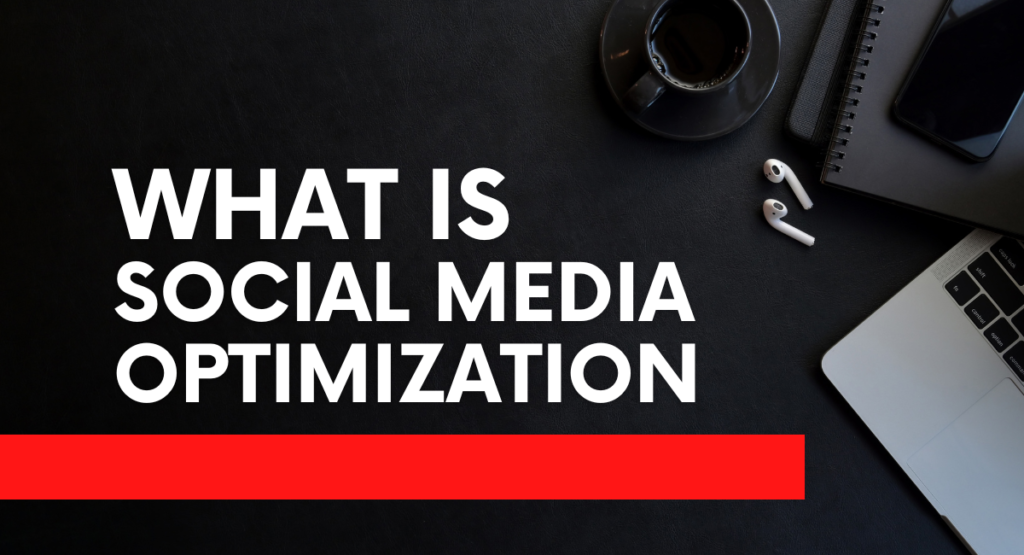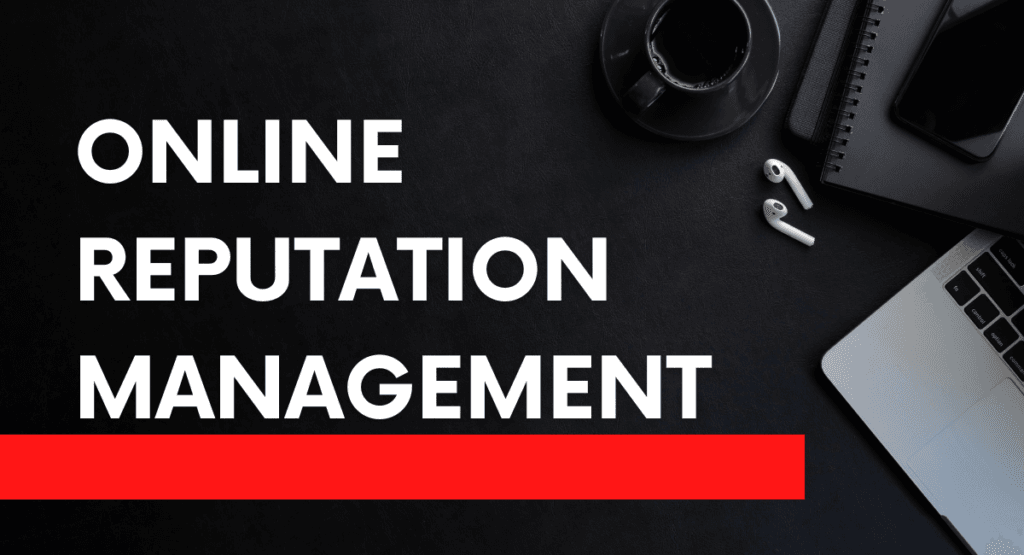Introduction
-
Brief overview of inbound marketing
Inbound marketing concentrates on giving relevant and helpful content, as opposed to employing invasive advertising to acquire clients. To attract new clients, it employs strategies including SEO, content marketing, social media interaction, lead nurturing, and more. Inbound marketing creates real connections and increases trust by coordinating marketing efforts with the buyer’s journey, which eventually results in conversions. Inbound marketing is focused on offering value and delivering an excellent user experience, as opposed to typical outbound marketing, which depends on cold calls and advertisements.
-
Importance in the digital age
In the present digital age, where customers can access a wealth of information and are pickier than ever, inbound marketing has become indispensable. By using content that speaks to the needs and interests of their target audience, marketers may establish a closer connection with them. Businesses that employ inbound marketing techniques may become more prominent and reputable as more customers base their purchasing decisions on web research. This strategy generates leads, turns them into devoted clients, and fosters enduring connections and brand advocacy.
-
What readers will learn from this guide
The best practices, strategies, and guiding concepts of inbound marketing will all be covered in this article to provide readers with a thorough overview of the industry. The book will teach readers how to use social media to build brand awareness, optimise their online presence through SEO, and produce content that draws in and engages their target audience. The training will also discuss lead nurturing strategies and how to assess the effectiveness of inbound marketing campaigns. After finishing it all, readers will possess the knowledge and resources needed to put into practice an effective inbound marketing plan that fosters client connections and promotes growth.
What is Inbound Marketing?
Instead than interrupting consumers with conventional advertising methods, inbound marketing aims to entice them with pertinent and helpful content. It puts an emphasis on establishing rapport and earning trust through the provision of insightful content, which ultimately encourages natural brand involvement from potential customers. This strategy corresponds with the inclinations and behaviours of contemporary consumers.
Definition and Key Principles
Bringing in, keeping, and enjoying customers are the three main pillars of inbound marketing. It entails producing material that is particularly tailored to the needs and preferences of potential clients at different points in their journey. Using analytics, social media, SEO, and content marketing is essential to creating a smooth user experience that turns visitors into devoted supporters.
- Explanation of inbound marketing
Rather than disseminating messages, inbound marketing concentrates on acquiring clients. It uses strategies like email marketing, social media, and blogging to establish insightful touchpoints that inform and captivate the audience. This strategy aims to build brand confidence by offering customers answers to problems they run into, thereby persuading them to pick the company over rivals.
- Core principles and philosophy
Three fundamental ideas underpin marketing automation: data-driven decision-making, personalisation, and efficiency. By automating monotonous operations, firms can allocate resources more effectively and free up marketers to focus on strategy and creative projects. The strategy’s fundamental component is an understanding of customer behaviour and preferences in order to deliver customised communications that boost engagement and conversion rates.
Inbound vs. Outbound Marketing
Through interesting experiences and instructive material, inbound marketing draws clients and encourages natural brand contact. To attract prospects, this strategy makes use of content marketing, social media, and SEO. On the other hand, outbound marketing uses innovative strategies to reach a large audience without making any prior contact, such as cold calling and traditional advertising.
- Comparison and contrast
Outbound marketing often prioritises quick results through direct outreach, but inbound marketing aims to create long-lasting partnerships by adding value and fostering trust. Since outbound methods concentrate on producing and nurturing prospects over an extended period of time, there are situations where quick conversions are sacrificed in favour of long-term client relationships. While they have different intended audiences and applications, both can be beneficial.
- Benefits of inbound marketing over traditional methods
Inbound marketing is better than outbound marketing for a number of reasons, including lower costs and a higher return on investment. Businesses can generate warmer leads and lessen their dependency on aggressive sales techniques by drawing in interested persons. Additionally, inbound strategies improve brand loyalty and retention by fortifying customer connections with customised content, which eventually promotes profitable, long-term business growth.
The Components of Inbound Marketing
Content Creation
The creation of pertinent and perceptive content suitable for engrossing a target audience is known as content material development. In addition to increasing traffic, high-quality content boosts credibility and confidence. It offers a range of content, such as infographics, videos, and essays, and it helps companies build relationships with clients, increase website traffic, and improve every aspect of their marketing plan.
- Importance of high-quality content
Producing top-notch content is essential for drawing in and keeping clients. It assists companies in effectively satisfying the demands of their target market while enhancing their brand. Rich content can raise search engine rankings, boost conversion rates, and enhance user engagement. Brands may cultivate client loyalty by offering value, which incentivises customers to return and share their experiences with others.
- Types of content (blogs, ebooks, infographics, videos)
Content comes in several forms, and each has a specific function. E-books provide in-depth information, but blogs provide frequent updates and commentary. Infographics simplify difficult information by visually representing it. Vibrant stories in videos captivate viewers. Combining several formats improves content planning and audience engagement by accounting for a range of learning styles.
SEO (Search Engine Optimization)
The practice of increasing a website’s visibility to search engines like Google is known as search engine optimisation, or SEO (SEO). It covers a wide range of methods, including as link-building tactics, on-page SEO, and keyword research. By presenting information online properly, effective SEO increases organic traffic, makes sure the right audience sees the content, and increases the likelihood that site visitors will become purchasers.
- Role of SEO in inbound marketing
As SEO encourages natural customer attraction, it is a crucial part of inbound marketing. Businesses can better match their products with user intent and make pertinent information easier for prospects to get by optimising their content for search engines. Through targeted awareness, this raises traffic, improves engagement, and ultimately raises conversion rates.
- Key SEO strategies for inbound marketing
Technical SEO advancements, user-intent focused content development, and keyword optimisation are all effective SEO tactics for inbound marketing. Creating high-quality backlinks and updating material regularly are also essential. Furthermore, by making a website more visible within particular geographic regions, local SEO strategies might attract more relevant visitors and enhance its overall efficacy.
Social Media Marketing
Social media marketers use platforms such as Facebook, Instagram, and Twitter to increase viewer engagement, brand visibility, and website traffic. By encouraging discussions and delivering pertinent content, businesses may develop genuine relationships with their customers. Businesses may also efficiently target particular communities with marketing thanks to social media.
- Leveraging social media platforms
Businesses need to customise their content if they want to make the most of all social media channels. Posts that have an engaging style, clear messaging, and eye-catching graphics can increase audience engagement. Building greater user relationships can also be facilitated by utilising platform-specific features like surveys and tales. Regular publishing and tracking of metrics aids in plan optimisation and performance improvement.
- Social media best practices
The best social media marketing strategies follow your brand’s voice, answer messages and comments very away, and monitor your progress with statistics. Brands ought to concentrate on producing interesting content, making good use of hashtags, and encouraging community interaction. Ensuring that marketing plans are in line with audience trends and preferences requires regular plan evaluation.
Email Marketing
Email marketing, which entails delivering customised communications to both current and new clients, is one effective digital tactic. It seeks to advance goods and services, foster connections, and encourage involvement. Email marketing is an essential component of any marketing plan since it may raise brand awareness, client loyalty, and conversion rates.
- Crafting effective email campaigns
You need a thorough understanding of your target and a defined purpose in order to build email marketing that works. Important elements include compelling content, attention-grabbing subject lines, and strong calls to action. A/B testing can aid in the optimisation of elements like design and time. To capture consumers’ attention and encourage conversions, personalisation and pertinent content are crucial.
- Segmenting and targeting your audience
You can segment your audience by interests, behaviours, or demographics by creating distinct groups on your email list. This allows you to send messaging that is relevant to each group. When users receive content that is suited to their interests, effective targeting increases engagement rates, open and click-through rates, and ultimately conversions.
Lead Generation and Nurturing
The goal of lead generation is to draw in new customers through a variety of strategies, including social media, paid advertising, and content marketing. After a lead is generated, nurturing entails establishing a relationship with the lead through relevant content and customised emails. This process leads prospects through the sales funnel, raises the chance of conversion, and fosters long-term customer loyalty.
- Techniques for capturing leads
One efficient strategy to acquire leads is to offer valuable content, like webinars or eBooks, in exchange for contact details. Additionally, it’s critical to handle forms with caution and optimise landing sites for conversions. Using referral networks, holding contests, and launching social media campaigns are more tactics for improving lead generation and drawing in new clients.
- Strategies for nurturing leads through the funnel
A multifaceted strategy is needed for lead nurturing, including the dissemination of educational materials, the creation of customised email sequences, and regular follow-ups. Examples of pertinent resources that can assist in moving leads along the sales funnel are case studies and product demos. Implementing marketing automation tools facilitates timely contacts based on lead behaviour, which further improves nurturing efforts.
Developing an Inbound Marketing Strategy
Setting Goals and Objectives
Setting goals and objectives is essential to ensuring that marketing campaigns are directed and aligned with the larger business plan. Well-defined, attainable goals provide direction and inspiration for the team. To help businesses allocate resources and monitor progress effectively, these goals should be SMART (specific, measurable, achievable, relevant, and time-bound).
- Defining clear, actionable goals
To develop specific, attainable goals, broad objectives must be broken down into manageable, specific tasks. This clarity helps teams understand their roles and responsibilities more clearly. By defining success clearly, teams may work together towards common goals and prioritise their efforts, such as increasing website traffic, generating leads, or improving customer interaction. This encourages progress and accountability.
- Key performance indicators (KPIs) to track
Key performance indicators (KPIs) are quantifiable statistics that indicate how successfully a business is achieving its marketing objectives. By selecting relevant key performance indicators (KPIs) like conversion rates, acquisition costs, and return on investment, marketers can monitor performance and make data-driven decisions. Regularly checking KPIs ensures that strategies remain aligned with goals and can be adjusted as needed.
Understanding Your Audience
Advertising success requires an understanding of your target audience. It involves learning about the concerns, behaviours, and interests of your target market. Understanding their target market well enough to tailor messaging, choose the right channels, and create products and services that appeal to them is possible for businesses. Conversion rates and consumer engagement will eventually rise as a result.
- Creating buyer personas
Creating buyer personas involves combining data and insights to create detailed profiles of your potential customers. These personas include information about hobbies, challenges, demographics, and buying habits. Using targeted personas to assist tailor marketing strategies, produce pertinent content, and enhance communication, businesses can make sure that their solutions meet the unique needs of their target audience.
- Conducting market research
Market research is the process of gathering and analysing market data, such as rivals, trends, and consumer preferences. This approach may use qualitative or quantitative methodologies such as focus groups, data analysis, surveys, and other techniques. Effective market research makes it easier to identify opportunities, improve products, and make well-informed decisions that take consumer expectations and market dynamics into account.
Creating a Content Calendar
This tactical tool outlines the content that will be released where, when, and on what dates. It also makes teamwork easier, synchronises messaging with marketing initiatives, and preserves a steady flow of material across several platforms. Businesses are also able to identify weaknesses and areas for development by visualising their content strategy.
- Planning and scheduling content
Selecting subjects, media types, and distribution methods that appeal to the target audience is a crucial part of efficient content planning. By ensuring that the material is timely and appropriate, scheduling maximises reach and engagement. Using a calendar helps marketers stay on top of deadlines and publication dates, promoting a regular publishing schedule that complements overarching marketing objectives and projects.
- Tools for content management
Content management is aided by numerous systems that include features like scheduling, collaboration, and analytics. Asana, CoSchedule, Trello, and other technologies allow teams to track their progress and manage their workflow. Additionally, applications like Hootsuite and Buffer help with social media update scheduling, and content management systems (CMS) like WordPress assist the production and posting process.
Implementing and Measuring Success
Tools and Technologies
To increase effectiveness and performance, inbound marketing makes use of a variety of strategies and tools. Important technologies include customer relationship management (CRM) systems for managing leads and customer interactions, content management systems (CMS) for creating and sharing engaging material, and analytics tools for tracking campaign performance. Workflows can be optimised and marketing strategies can be enhanced overall with the use of these technologies.
- Recommended tools for inbound marketing (e.g., CRM, analytics tools)
To maximise the impact of inbound marketing, make use of CRM systems like HubSpot or Salesforce, which help with managing customer relationships and automating contact. Email marketing platforms like Mailchimp provide customised campaigns, and analytics tools like Google Analytics disclose website performance. Together, these tools make it possible to implement a data-driven lead generation and engagement strategy.
Measuring ROI and Performance
Understanding ROI and performance is crucial to understanding the efficacy of inbound marketing strategies. To do this, one must compare the revenue received with the campaign expenditures. By keeping an eye on key performance indicators (KPIs) like customer acquisition cost (CAC) and lifetime value (LTV), businesses can make more informed decisions and allocate resources more efficiently.
- Metrics to evaluate success
Metrics like website traffic, lead conversion rates, and engagement levels over many channels are crucial in evaluating the effectiveness of inbound marketing initiatives. Tracking social media interactions, email open and click-through rates, and overall sales data can also be used to evaluate the effectiveness of a campaign. Regular analysis of these KPIs and data-driven modifications by marketers can help them identify patterns and maximise results.
- Analyzing and interpreting data
An essential stage in data analysis and interpretation is turning numerical data into actionable insights. To identify patterns and trends, marketers should segregate data and compare performance to benchmarks. Making complex data more digestible can be achieved by using visualisation techniques. Marketers can utilise this data to guide their future marketing efforts by learning about the preferences, behaviour, and effectiveness of specific approaches of their target audience.
Adjusting Your Strategy
When it comes to modifying their approach, marketers must be adaptable and quick to react to performance data. This can include transferring funding to channels that are operating more profitably or altering the messaging to better engage the target demographic. By continuing to be open to data inputs, businesses may maximise their efforts and maintain a competitive edge in the market.
- How to pivot based on performance data
Information Analysing campaign metrics to ascertain what is and is not working is necessary when making changes based on performance data. Through vigilant observation of key performance indicators (KPIs) like as ROI, conversion rates, and engagement levels, companies may make educated adjustments to their plans. To maximise overall performance and achieve desired goals, these decisions may involve shifting funds to channels that perform better, modifying messaging for increased resonance, or experimenting with new techniques. Regular data evaluation ensures that marketing campaigns are adaptable and sensitive to changing customer needs and market conditions.
- Continuous improvement tactics
Customer feedback and performance indicators require constant assessment and improvement of inbound marketing strategies. Among these tactics are A/B testing different content formats, incorporating user feedback into product development, and staying up to date with industry advancements. Organisations may increase the effectiveness of their marketing campaigns and better adapt to the shifting needs of their clientele by fostering a culture that values experimentation and learning.
Case Studies and Examples
Success Stories
- Real-world examples of successful inbound marketing campaigns
Real-world examples of successful inbound marketing campaigns show the importance of customer-focused strategies and captivating content. For instance, HubSpot’s own blog produces leads with informative pieces and provides useful tools and resources. Similar to this, Airbnb builds community and trust through the usage of user-generated content, which in turn dramatically increases conversions and brand loyalty.
Lessons Learned
- Common pitfalls and how to avoid them
Irrelevant content, inconsistent messaging across platforms, and other typical inbound marketing mistakes might arise from a failure to conduct audience research. To prevent these issues, companies should place a high priority on upholding a consistent brand voice, regularly reviewing campaign results, and understanding the needs and preferences of their target market. Proactively managing marketing initiatives ensures that they align with company goals and customer expectations.
Future Trends in Inbound Marketing
Emerging Technologies
The advent of novel technologies is transforming the marketing landscape by granting companies entry to advanced instruments and strategies. Artificial intelligence (AI), machine learning, automation, and other technological developments give marketers the ability to immediately assess data, predict trends, and create tailored experiences. Thanks to this technical advancement, businesses may now boost productivity, optimise advertising, and forge closer bonds with their target audience.
- AI and automation in inbound marketing
Artificial intelligence (AI) and automation play a major role in inbound marketing by streamlining processes like lead scoring, customer segmentation, and content creation. These technologies help marketers create audience-resonant, personalised advertising by studying user behaviour. By automating time-consuming tasks, businesses can focus on creating high-quality content, nurturing leads, and finally boosting conversions.
Evolving Consumer Behavior
Technology advancements and shifting social norms are causing a rapid shift in consumer behaviour. Modern consumers expect brands to provide them with quick satisfaction, openness, and tailored experiences. Marketers must appreciate these trends in order to develop approaches that suit consumer preferences and, in the end, build loyalty and repeat business in a highly competitive industry.
- Adapting to changes in how consumers interact with brands
Through social media, email marketing, or chatbots, among other channels, brands must always adapt to the ways in which consumers engage with them. By using data and insights, businesses can modify their interactions to align with the expectations and preferences of their clientele. In a fast-moving digital economy, this flexibility strengthens customer satisfaction and brand loyalty.
Conclusion
By reaching customers where they are and offering value, inbound marketing helps brands stay relevant at a time when consumer behaviour is always changing. Instead of employing intrusive approaches, inbound marketing helps firms create real relationships by concentrating on providing value through tailored content. A well-executed inbound strategy, supported by interesting blogs, social media content, and data-driven insights, may build a devoted customer base and promote sustainable growth, as demonstrated by Indian startups such as Zomato.
FAQ’s
What is the main difference between inbound and outbound marketing?
While outbound marketing uses conventional advertising techniques to push information to potential customers, inbound marketing draws customers in with helpful content.
What types of content are most effective for inbound marketing?
Blog entries, e-books, infographics, videos, and podcasts are excellent for attracting and retaining audiences interested in inbound marketing.
What role does SEO play in inbound marketing?
SEO improves search engine exposure, creating organic traffic and enhancing the effectiveness of inbound marketing methods.
What are some common mistakes in inbound marketing?
Typical errors include failing to conduct user research, creating erratic or subpar content, leaving out calls to action, and failing to optimise for search engines.







